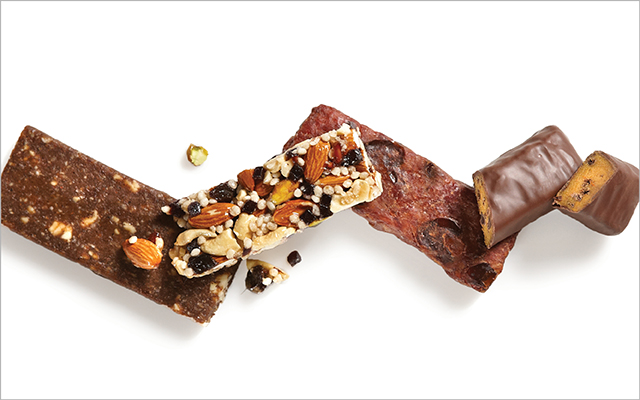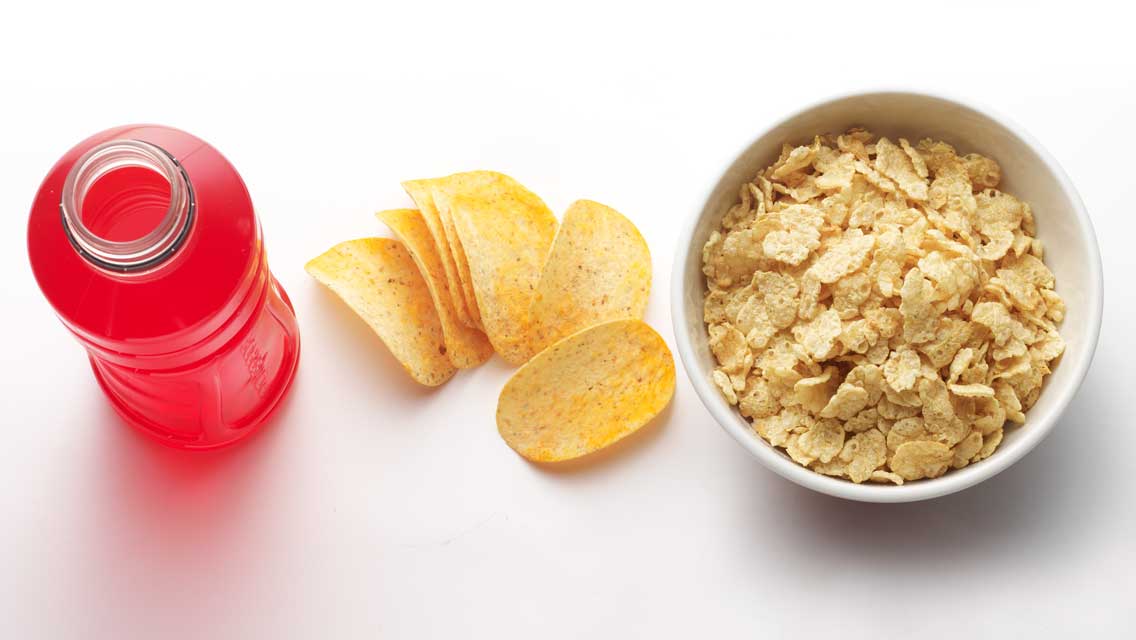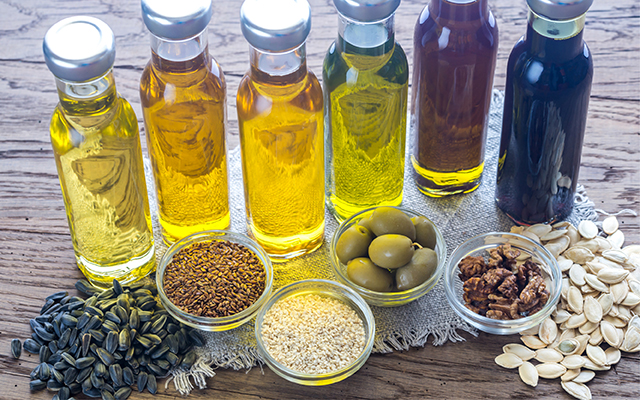The worst are full of sugar, refined flours, artificial ingredients, and hydrogenated fats, making them a poor choice for most health-motivated types.
A little label know-how can help you pick a better bar, one that will help amplify (not sap) your energy. Here’s what to watch for in a few key categories.
1. Fats
Energy comes from three macronutrients: carbohydrates, proteins, and fats.
Fats are the most concentrated source of energy. Healthy fats not only help us feel satiated, they also help balance blood sugar and prevent energy dips.
Look for bars containing fats from whole foods such as almonds, sesame seeds, coconut, and flax rather than hydrogenated oils (trans fats), or industrial vegetable oils, like corn and soy, which have less desirable nutrition profiles.
2. Protein
This vital nutrient helps build muscle, stoke metabolism, and support tissue repair. But some so-called protein bars contain just 15 grams of protein (and a far greater quantity of sugary carbs), while others have up to 30. Higher protein generally means a lower glycemic index and more gradual energy delivery.
The amount of protein you need depends on your activity level and goals: The International Society of Sports Nutrition recommends that adults aiming to build muscle and strength eat 0.6 to 0.9 grams per pound of body weight daily (90 to 135 grams of protein for a 150-pound person). (For more on protein, see “Protein Power: What You Need to Know“.)
The most common energy-bar protein sources are derived from soy and dairy, but others include nuts or nut butters, and several brands are now including unexpected ingredients like grassfed beef, bison, and lamb — and even insect-flour protein.
3. Carbohydrates
Carbs (including sugars and fiber) often get a bad rap, but they’re the body’s main source of fuel.
In choosing an energy bar, keep in mind that more carbs generally equate with more quick-access (but shorter-lasting) energy — and with a higher glycemic index. A study published in the Journal of the American Dietetic Association shows that athletes looking for a quick boost should reach for an energy bar (with a minimum of 40 percent of calories coming from carbs), while endurance athletes would be wise to keep blood-sugar levels stable with a lower-carb protein bar (ideally one with less than 40 percent of calories coming from carbs).
There are no official guidelines that separate an energy bar from a protein bar, though, so be sure to read the ingredients and the nutrition label.
4. Sugar
With energy bars increasingly engineered to taste like desserts, it’s no surprise many are loaded with processed sugar. Some have a whopping 25 grams — more than many candy bars.
Unless you are preparing to burn a lot of energy fast, steer clear of the blood-sugar spike-and-crash problem by choosing bars with less than 10 grams of sugar.
Look for natural sweeteners like dates, honey, and pure maple syrup while avoiding artificial and highly refined sweeteners (including high-fructose corn syrup).
5. Fiber
Fiber facilitates healthy digestion and detoxification, supports cardiovascular health, and curbs cravings. Fiber also helps reduce glycemic load and moderate energy delivery.
The amount in energy bars varies wildly, from 1 to 14 grams (the latter of which is as much as two servings of broccoli). Aim for more, when possible, ideally from sources like fruit, chia and flaxseeds, and chicory root. (For more, see “Fiber: Why It Matters More Than You Think“.)




This Post Has 0 Comments